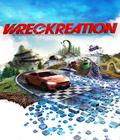Latest Previews
Advertising
PS3/X360/PC Preview - 'BioShock 2'
by Rainier on Jan. 1, 2006 @ 1:30 a.m. PST | Filed under E3 - Post - E3 2009
BioShock was one of the more interesting games to hit in the past few years. A pseudo-sequel to the cult PC hit System Shock, it combined survival horror and first-person shooter elements in an interesting and exciting way.
PS3/X360 Preview - 'Marvel: Ultimate Alliance 2'
by Rainier on Jan. 1, 2006 @ 1:30 a.m. PST | Filed under E3 - Post - E3 2009

Genre: Action Role-Playing
Publisher: Activision
Developer: Vicarious Visions
Release Date: September 15, 2009
 It's hard to make a good superhero game but nearly impossible to make a good superhero team game. Characters like Superman, Spider-Man or The Hulk are hard enough to make work when the entire game is focused on them, but trying to put a bunch of heroes into a single game usually leads to iffy results, such as the lackluster Justice League games. The one notable exception to this has been the Activision superhero titles, X-Men: Legends and Marvel: Ultimate Alliance. The two games
It's hard to make a good superhero game but nearly impossible to make a good superhero team game. Characters like Superman, Spider-Man or The Hulk are hard enough to make work when the entire game is focused on them, but trying to put a bunch of heroes into a single game usually leads to iffy results, such as the lackluster Justice League games. The one notable exception to this has been the Activision superhero titles, X-Men: Legends and Marvel: Ultimate Alliance. The two games
'Golden Axe: Beast Rider' (PS3/X360) - 5 New Screens
by Rainier on Jan. 1, 2006 @ 1:30 a.m. PST | Filed under Sega Gamers' Day - SEGA Gamers' Day 2008
Golden Axe: Beast Rider is an all-new take on the legendary Golden Axe arcade game.
'Golden Axe: Beast Rider' (PS3/X360) - 5 New Screens
by Rainier on Jan. 1, 2006 @ 1:30 a.m. PST | Filed under E3 - E3 2008 - July 15th
Golden Axe Beast Rider is an all-new take on the legendary Golden Axe arcade game.
'Uncharted: Drake's Fortune' (PS3) - Screens
by Rainier on Jan. 1, 2006 @ 1:30 a.m. PST | Filed under Leipzig Games Convention - Leipzig Games Convention 2007 - Day 2

Developed by the studio that brought blockbuster hit franchises Crash Bandicoot and Jak & Daxter to PlayStation fans, Naughty Dog Inc.’s, Uncharted: Drake’s Fortune is the first game in a new fast-paced action-adventure franchise developed exclusively for the PS3.
Uncharted: Drake’s Fortune, brings players into a world ripe with realism and unexpected juxtapositions. A fallible hero akin to those depicted in pulp-adventure genre films, Nathan Drake brings a humanity and believability never seen before in video gaming, enabled entirely through PS3 technology advancements.
A 400-year-old clue in the coffin of Sir Francis Drake sets a modern-day fortune hunter on an
'PowerUp Forever' (PS3/X360) Announced - Screens
by Rainier on Jan. 1, 2006 @ 1:30 a.m. PST | Filed under Namco Bandai Gamers' Day - Namco Bandai Editors' Day 2008
Get ready for high-octane, shooting action with PowerUp Forever. Space and time are irrelevant in your search for evil forces as you fight a relentless horde of enemies across an endless spatial battlefield. Destroying elite enemies allows you to absorb their energy, transforming your ship’s size, shape and power. As your ship evolves and grows your world and its enemies shrink to insignificance, revealing even more massive and powerful enemies that were previously too large to see.
“Xbox Live Arcade and the PlayStation Network give us a unique opportunity to
'Wheelman' (PS3/X360/PC) - Facts, Features, Screens & Trailer
by Rainier on Jan. 1, 2006 @ 1:30 a.m. PST | Filed under Misc Events - Midway Gamers' Day 2008

Get The Wheelman [PS3/X360/PC] Trailer off WP (105mb)
Starring Vin Diesel in The Wheelman, you’re on the run from the mafia in the U.S. and returning to Barcelona, a place where you have a dark past and criminal gangs infest the city. It’s your job to set the factions against each other to cover a daring heist. With a focus on over-the-top, intense vehicle combat, build your reputation by undertaking missions, taking part in challenging events, all the while looking to pull off stylish, extreme driving stunts.
Combining spectacular Hollywood-style stunts with a gripping storyline, Wheelman provides an adrenaline-fueled,
'Prototype' (PS3/X360/PC) - 2 New Trailers
by Rainier on Jan. 1, 2006 @ 1:30 a.m. PST | Filed under Sierra Gamers' Event - Sierra Spring Event 2008

Get the Prototype [ALL] Trailer off WP (45/12mb)
Discover what lies beyond the edge of evolution. An all-new, 3rd person open-world/action game, Prototype puts gamers at the helm of Alex Mercer – a genetically mutated shape-shifter with no memory of his past hell-bent on solving the mystery of his existence – as he tears through a densely populated New York City moving with Parkour-style fluidity and consuming anybody that gets in his way…assuming their physical identity, memories and abilities. Fueled by three key factions consisting of Alex, the Blackwatch (military) and a viral outbreak known as the Infected,
'50 Cent: Blood on the Sand' (PS3/X360) - 5 New Screens & Trailer
by Rainier on Jan. 1, 2006 @ 1:30 a.m. PST | Filed under Sierra Gamers' Event - Sierra Spring Event 2008
Get the 50 Cent: Blood on the Sand [PS3/X360] Trailer off WP (14mb)
In this fictional follow-up story to Bulletproof video game, players will be able to play as one of the world’s biggest hip-hop stars in an all-out battle to protect 50 Cent’s assets and to collect payment from a crooked overlord.
“We are taking this sequel to the next level with exciting combat and gunplay, new original music, great graphics and a new story,” said 50 Cent. “50 Cent: Blood on the Sand will have everything my fans are looking for in a 50 Cent game.”
The 50 Cent: Blood
'The Bourne Conspiracy' (PS3/X360) - 8 New Screens & Trailer
by Rainier on Jan. 1, 2006 @ 1:30 a.m. PST | Filed under Sierra Gamers' Event - Sierra Spring Event 2008

Get The Bourne Conspiracy [PS3/X360] Trailer off WP (23mb)
Robert Ludlum’s The Bourne Conspiracy, will give players the experience of becoming a 30 million dollar elite agent, fusing an experience that delves deep into Jason Bourne’s character with gameplay and game presentation inspired by the aggressive filmmaking and frenetic action found in the films. Only by playing Robert Ludlum’s The Bourne Conspiracy will players discover Bourne’s true identity and experience the very moment he became a malfunctioning weapon, first hunting targets around the world as a deadly government assassin then marking himself as his agency’s most wanted.
'Pure' (PS3/X360/PC) - 25 New Screens
by Rainier on Jan. 1, 2006 @ 1:30 a.m. PST | Filed under E3 - E3 2008 - July 16th

Developed by Black Rock Studio, Disney Interactive Studios' award-winning development studio in Brighton, England, Pure takes quad racing to a new level, featuring massive jumps and spectacular airborne tricks in memorable, photo-realistic settings all over the globe.
Featuring never-before-seen, vertigo-inducing massive aerial jumps in real-world quad locations, Pure delivers heart-pounding off-road racing unique to the genre.
Players start by choosing among a variety of male and female character riders. They can then either race against deft A.I.
'Far Cry 2' (PS3/X360/PC) - 11 New Screens & Trailer
by Rainier on Jan. 1, 2006 @ 1:30 a.m. PST | Filed under E3 - E3 2008 - July 16th

Get the Far Cry 2 [PS3/X360/PC) Trailer off WP (41mb)
More than just a visual and technological achievement, Far Cry 2 immerses players in an entirely new kind of gaming experience, featuring a custom-made video game engine built from the ground up. Players will discover a true open world gameplay set in one of the most beautiful environments in the world, Africa, brought to life by high-definition next-gen technology.
You are a gun for hire, trapped
'Tom Clancy's H.A.W.X.' (PS3/X360/PC) - 10 New Screens
by Rainier on Jan. 1, 2006 @ 1:30 a.m. PST | Filed under E3 - E3 2008 - July 16th

Developed by Ubisoft's Bucharest studio, Tom Clancy's HAWX delivers an intense and authentic aerial combat experience by fully leveraging the benefits of the next-generation platform. The story begins in the year 2012. As the era of the nation-state draws quickly to a close, the rules of warfare evolve even more rapidly. More and more nations become increasingly dependent on private military companies (PMCs), elite mercenaries with a lax view of the law. The Reykjavik Accords further legitimize their existence by authorizing their right to serve in every aspect of military operations. While the benefits of such PMCs are
'The Last Remnant' (PS3/X360/PC) - New Screens & Trailer
by Rainier on Jan. 1, 2006 @ 1:30 a.m. PST | Filed under E3 - E3 2008 - July 17th

Get The Last Remnant [ALL ] Trailer off WP (15mb)
The Last Remnant is a completely original RPG title, taking advantage of the power of next-generation hardware to build a lush, realtime fantasy world. Making full use of the power of Epic Games' flexible middleware solution, Unreal Engine 3, Square Enix can now achieve simultaneous development on multiple platforms.
The game's battle system has been carefully crafted to deliver a brand-new experience for gamers, as they control forces in massive battles between up to seventy different units at once. Today's press conference also featured a demonstration of the game,
PS3/X360 Preview - 'Facebreaker'
by Rainier on Jan. 1, 2006 @ 1:30 a.m. PST | Filed under E3 - Post - E3 2008

Genre: Sports
Publisher: EA Sports
Developer: EA Canada
Release Date: September 5, 2008
 Facebreaker is "Treasure Video Games Presents Rock 'em Sock 'em Robots."
Facebreaker is "Treasure Video Games Presents Rock 'em Sock 'em Robots."
I'm going to be using this analogy a lot when I write articles for this game. This is, then, officially the first recorded instance.
If boxing titles are few and far between, then cartoony arcade boxing titles are even more so. The last one we had was Midway's Ready 2 Rumble Boxing Round 2 back on the Dreamcast and PS2. Go back further, and we're going into Mike Tyson's Punch Out!! territory. Yep, back
'Crash Commando' (PS3) - 20 New Screens
by Rainier on Jan. 1, 2006 @ 1:30 a.m. PST | Filed under E3 - E3 2008 - July 17th

Crash Commando, a PS3 title exclusively for download on PlayStation Network, is a side scrolling multiplayer shooter game pitting two arch-enemy commando factions - the Grunts and the Jarheads - against each other in an all-out fight for world supremacy. Developed by EPOS Game Studios, Crash Commando is a fast-paced, humorous multiplayer game with over-the-top, slap-stick action that features exaggerated gore and effects. Combining the thrill of frenzied multiplayer combat with the straightforward nature of a classic side-scrolling platform title, Crash Commando is accessible to all players and it is the perfect combination of modern, sophisticated technology and
'The Darkness' (PS3/X360) - 5 New Screens & Trailer
by Rainier on Jan. 1, 2006 @ 1:30 a.m. PST | Filed under Microsoft Gamers' Day - X06
'Fat Princess' (PS3) - 6 New Screens
by Rainier on Jan. 1, 2006 @ 1:30 a.m. PST | Filed under E3 - E3 2008 - July 17th
Frantic and fun, Fat Princess pits two hordes of players against each other in comic medieval battle royale. Your goal is to rescue your beloved princess from the enemy dungeon. There's a catch though: your adversary has been stuffing her with food to fatten her up and it's going to take most of your army working together to carry her back across the battlefield.
'inFamous' (PS3) - 6 New Screens
by Rainier on Jan. 1, 2006 @ 1:30 a.m. PST | Filed under E3 - E3 2008 - July 17th

If society collapsed tomorrow and you found yourself with unique powers that could either help people or hurt them, which would you do? That's the question at the centre of inFamous, the forthcoming PS3 title from Sony Computer Entertainment Europe (SCEE).
Developed by Sucker Punch Productions, this open-ended, free-roaming game puts you in the shoes of Cole, an everyday guy and urban explorer, in the aftermath of a huge disaster that destroys his hometown of Empire City. As Cole, you must first learn to use new found powers and then decide how you will use them.
PS3 Preview - 'Fatal Inertia'
by Rainier on Jan. 1, 2006 @ 1:30 a.m. PST | Filed under E3 - Post - E3 2006

Genre: Racing
Publisher: Koei
Developer: Koei
Release Date: November 17, 2006
 Of all of the titles slated to ship alongside the launch of Sony's PlayStation 3 console, Koei's Fatal Inertia looks to be one of the standout titles. Set in the 23rd century, Fatal Inertia is based on a sport that involves pilots flying around at incredible speeds and taking each other down, all in the name of honor and glory. At this year's E3, we got to talk with some members of the Koei team to check out their fast-paced racer, which is set to hit
Of all of the titles slated to ship alongside the launch of Sony's PlayStation 3 console, Koei's Fatal Inertia looks to be one of the standout titles. Set in the 23rd century, Fatal Inertia is based on a sport that involves pilots flying around at incredible speeds and taking each other down, all in the name of honor and glory. At this year's E3, we got to talk with some members of the Koei team to check out their fast-paced racer, which is set to hit
PS3 Preview - 'Assassin's Creed'
by Rainier on Jan. 1, 2006 @ 1:30 a.m. PST | Filed under E3 - Post - E3 2006

Genre: Action
Publisher: Ubisoft
Developer: Ubisoft Montreal
Release Date: Q1 2007
 The Prettiest, Noblest Assassin
The Prettiest, Noblest Assassin
If you set aside all things Nintendo in their own special, line-hundreds-deep category, the non-Wii-related star of E3 2006 belonged to Ubisoft. The Assassin's Creed demo chamber barely contained the frenzy of last-minute glimpse-seekers during the waning hours of the show. As if the situation weren't dire enough already, Steven Spielberg and a small entourage arrived just in time to commandeer the room for 30 precious minutes while all of us who didn't direct "Munich" hassled the PR people for a good position
PS3/X360 Preview - 'Army of Two'
by Rainier on Jan. 1, 2006 @ 1:30 a.m. PST | Filed under E3 - E3 2007 - July 11th

Genre: Third-Person Shooter
Publisher: Electronic Arts
Developer: EA Montreal
Release Date: Fall 2007
 Army of Two's title serves a pair of purposes, as it not only pokes fun at the United States Army's "Army of One" slogan, but it also delivers the core concept behind the game. No matter how you play — be it offline or via Xbox Live — you will always have a partner, whether it's an AI companion or an actual human player. This combination of shooting, action and constant cooperative play helps make Army of Two seem like the bastard child of
Army of Two's title serves a pair of purposes, as it not only pokes fun at the United States Army's "Army of One" slogan, but it also delivers the core concept behind the game. No matter how you play — be it offline or via Xbox Live — you will always have a partner, whether it's an AI companion or an actual human player. This combination of shooting, action and constant cooperative play helps make Army of Two seem like the bastard child of
'The Club' (PS3/X360/PC) - Features & Screens
by Rainier on Jan. 1, 2006 @ 1:30 a.m. PST | Filed under E3 - E3 2007 - July 13th
Only the most ruthless killers can join the underground elite known as The Club. From acclaimed developer Bizarre Creations, The Club takes the explosive action of the shooter genre and blends it with break-neck speed of high-octane race titles to create a radically new kind of action experience. Players will blast through a secretive tournament known only as The Club, where the world’s rich and powerful watch merciless fighters test their skills. While highly trained and effectively brutal, most combatants find themselves forced to participate. The posse of urban warriors represents a variety of countries and backgrounds. They share almost
PS3/X360 Preview - 'Fracture'
by Rainier on Jan. 1, 2006 @ 1:30 a.m. PST | Filed under E3 - Post - E3 2007

Genre: Action/Shooter
Publisher: LucasArts
Developer: Day 1 Studios
Release Date: Summer 2008
 First announced back in May, LucasArts'original IP Fracture has been gaining hype for its unique emphasis on nonstop terrain deformation, as each weapon and absurdly powerful grenade in the game can reshape the very ground upon which you stand. Fracture will pit the Atlantic Alliance and Pacificans against each other in a bleak, war-torn vision of America in the year 2161.
First announced back in May, LucasArts'original IP Fracture has been gaining hype for its unique emphasis on nonstop terrain deformation, as each weapon and absurdly powerful grenade in the game can reshape the very ground upon which you stand. Fracture will pit the Atlantic Alliance and Pacificans against each other in a bleak, war-torn vision of America in the year 2161.
The ability to raise and lower the earth will factor heavily into any mode of play, but the biggest concern is likely to be





























